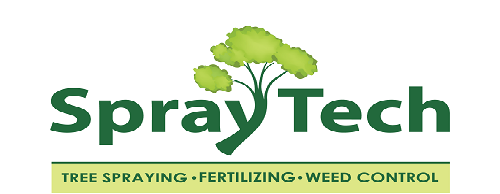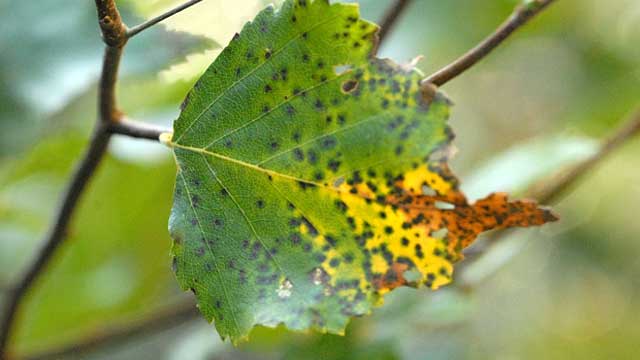Tree Spraying for Aspen Tree Fungus
Our aspen tree services include:
- aspen removal
- aspen deep root watering
- aspen scale infestation removal and treatment
There are several species that can create a brown or black fungus on trees, especially aspen, cottonwoods and other poplar species. When an aspen or cottonwood is infected with a foliage disease the aesthetic value is highly reduced. Home and property owners often use tree spraying for Aspen tree fungus to prevent severe outbreaks. During these outbreaks, the disease can cause early loss of leaves or kill parts of the tree. What causes fungus on aspen and other poplar trees? Fungus usually develops in wet, cool weather.
There are several types of fungi that affect Poplar and Aspen in Colorado. The most common foliage disease in urban areas is the fungus Marssonina. Known as Marssonia Leaf Spot, this aspen tree fungus causes dark brown flecks with yellow rings on infected leaves. Smaller spots have white centers. Occasionally you can find Marssonia Leaf spot on petioles and new shoots. On cottonwoods in urban Colorado, Septoria leaf spot is common. The Septoria fungus causes tan circular spots with black margins. Often the spotting pattern is different from tree to tree; contact your SprayTech expert to determine if you have Septoria leaf spot. In wet weather, cankers can also develop.
There are a couple of fungi which affect trees in mountainous areas of Colorado; Ink spot and Leaf Rust. Ink spot is a leaf disease caused by the fungus Ciborinia. The leaf surface browns with hard masses of oval fungal material which fall to the ground in the fall. These masses overwinter the fungus until spring weather brings on spore production. Ink spot can reduce growth in trees from early defoliation. Leaf rust is caused by the aspen tree fungus Venturia and generally affects young aspen and cottonwood. The fungus causes brown or blackened leaves which dry and distort. It causes cankers, new shoot death and distorted growth patterns. Later in the season, trees become more resistant to the disease.
Signs of Attack
Infected aspen and cotton wood are easy to identify. Knowing which type of tree fungus may be more difficult, here are a few tips to identifying the four common types of Colorado Poplar and Aspen tree fungus
- Marssonia Leaf Spot: Dark brown flecks on leaves, with yellow halos. White center in young spots. In wet weather, several spots fuse to form large dead patches. Occasional spots on petioles and new shoots.
- Septoria Leaf Spot: Varies with species and over time. Tan circular spot with black margins with small black bumps in center. Irregular black and brown spots merged into larger dead areas. Cankers on branches in wet areas. On cottonwoods and especially damaging to lanceleaf cottonwoods.
- Aspen Ink Spot: Tan or brown areas on upper leaf. Ring patters visible as fungus grows, appearing similar to leafminer patters. Dark brown leaves late in season developing large black growths which fall to the ground in late summer.
- Leaf Rust: Brown or black or yellow-orange spots on leaves. Irregularly shaped and spreading throughout the tree leaves. Dry and distorted new growth and leaves.
Control & Prevention
Tree management is an important step in preventing foliar diseases in your aspen and cottonwood species. Removal of leaves and branches which are infected each fall can help prevent the disease from returning the following spring. Since many fungi overwinter in fallen leaves beneath the trees, regular raking and fallen debris removal can also help. Fungicide application is an effective way to prevent outbreaks of foliar disease on your property.
Here are some steps to keep your aspen healthy:
- deep root watering. Overwatered and underwatered aspens will suffer. Deep root watering services will help to control the amount of water they are getting.
- removing scale infestations. Oystershell scales can cause the death of a branch and even a whole tree. They are sucking aspen sap. We can help you with removing infestation and treat aspen with dormant oil spray.
- avoiding trunk damage.
If you live in Denver, Castle Rock or Larkspur and need help identifying a black fungus on trees, give SprayTech a call today. We are experts in tree spraying for Aspen tree fungus, along with many other pests and diseases. SprayTech can provide all of your tree service needs. We will help establish a management plan to maintain a healthy tree population on your property.


